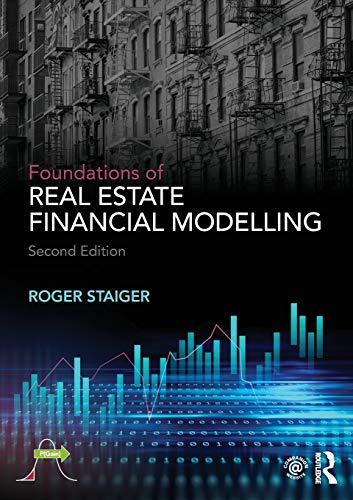Question
You are interested in proposing a new venture to the management of your company. Pertinent financial information is given below. BALANCE SHEET Cash 2,000,000 Accounts
You are interested in proposing a new venture to the management of your company. Pertinent financial information is given below.
BALANCE SHEET
| Cash | 2,000,000 | Accounts Payable and Accruals | 18,000,000 |
| Accounts Receivable | 28,000,000 | Notes Payable | 40,000,000 |
| Inventories | 42,000,000 | Long-Term Debt | 60,000,000 |
|
|
| Preferred Stock | 10,000,000 |
| Net Fixed Assets | 133,000,000 | Common Equity | 77,000,000 |
| Total Assets | 205,000,000 | Total Claims | 205,000,000 |
Last years sales were $225,000,000.
The company has 60,000 bonds with a 30-year life outstanding, with 15 years until maturity. The bonds carry a 10 percent semi-annual coupon, and are currently selling for $874.78.
You also have 100,000 shares of $100 par, 9% dividend perpetual preferred stock outstanding. The current market price is $90.00. Any new issues of preferred stock would incur a 3.33% per share flotation cost.
The company has 10 million shares of common stock outstanding with a current price of
$14.00 per share. The stock exhibits a constant growth rate of 10 percent. The last dividend (D0) was $.80. New stock could be sold with flotation costs of 15 percent.
The risk-free rate is currently 6 percent, and the rate of return on the stock market as a whole is 14 percent. Your stocks beta is 1.22.
Stockholders require a risk premium of 5 percent above the return on the firms bonds.
The firm expects to have additional retained earnings of $10 million in the coming year, and expects depreciation expenses of $35 million.
Your firm does not use notes payable for long-term financing.
The firm considers its current market value capital structure to be optimal, and wishes to
maintain that structure. (Hint: Examine the market value of the firms capital structure, rather than its book value when determining the weights in the WACC calculations.)
The firms management requires a 2% adjustment to the cost of capital for risky projects.
Your firms federal + state marginal tax rate is 40%.
The firm has the following investment opportunities currently available in addition to the venture that you are proposing:
| Project | Cost | IRR |
| A | 10,000,000 | 20% |
| B | 20,000,000 | 18% |
| C | 15,000,000 | 14% |
| D | 30,000,000 | 12% |
| E | 25,000,000 | 10% |
Your venture would consist of a new product introduction (You should label your venture as Project I, for introduction). You estimate that your product will have a six-year life span, and the equipment used to manufacture the project falls into the MACRS 5-year class. Your venture would require a capital investment of $15,000,000 in equipment, plus $2,000,000 in installation costs. The venture would also require an initial investment in accounts receivable and inventories of $4,000,000. At the end of the six-year life span of the venture, you estimate that the equipment could be sold at a $4,000,000 salvage value.
Your venture, which management considers risky, would increase fixed costs by a constant
$1,000,000 per year, while the variable costs of the venture would equal 30 percent of revenues. You are projecting that revenues generated by the project would equal $5,000,000 in year 1,
$10,000,000 in year 2, $14,000,000 in year 3, $16,000,000 in year 4, $12,000,000 in year 5, and
$8,000,000 in year 6.
The following list of steps provides a structure that you should use in analyzing your new venture.
Note: Carry all final calculations to two decimal places.
Phase 1
Find the costs of the individual capital components:
long-term debt
preferred stock
retained earnings (avg. of CAPM, DCF, & bond yield + risk premium approaches)
new common stock
Determine the target percentages (weights) for the optimal capital structure. (Carry weights to four decimal places. For example: 0.2973 or 29.73%)
Compute the retained earnings break point.
Draw the MCC schedule, including depreciation-generated funds in the schedule.
Phase 2
Compute the Year 0 investment for Project I.
Compute the annual operating cash flows for years 1-6 of the project.
Compute the non-operating (end-of-project) cash flows at the end of year 6.
Draw a timeline that summarizes all of the cash flows for your venture.
Phase 3
Compute the IRR and payback period for Project I.
Draw the IOS schedule, including Project I along with Projects A-E.
Determine your firms corporate cost of capital.
Compute the discounted payback and NPV for Project I at the risk-adjusted cost of capital for project I.
Indicate which projects should be accepted, and why.
Would your answer be different if the project I was determined to be of average risk? Explain.
Step by Step Solution
There are 3 Steps involved in it
Step: 1

Get Instant Access to Expert-Tailored Solutions
See step-by-step solutions with expert insights and AI powered tools for academic success
Step: 2

Step: 3

Ace Your Homework with AI
Get the answers you need in no time with our AI-driven, step-by-step assistance
Get Started


